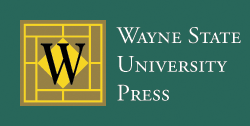Abstract
Ubiquitous, highly visible, nonspecific to geography, history, race, or sex, dwarfism’s connection with Australia’s mythic and literary histories is remarkable enough to suggest here that it occupy its own subgenre in literature, the zwergroman (m). Australia’s branding as the “Antipodes” geographically recalls its colonial past; mythographically the imaginative configuration was as an underworld of opposites ruled by the diminutive King of the Antipodes. Thus, the zwergroman is frequently fashioned from Celtic myths of the colonizing power along with the shaping power of colonial processes. In addition to introducing the conventions of the zwergroman and demonstrating the significance of dwarf characters to Australia’s pre- and postcolonial narratives, this article gradually introduces concepts from disability studies (through the scholarly work of Erin Pritchard, David T. Mitchell and Sharon L. Snyder, and others) by examining representations and cultural meanings imposed on dwarf characters prior to the counter histories of twenty-first-century short-statured scholars whose demand for personhood required an engagement with subjective and experiential realities. The novels discussed (1970–94) represent a cluster of dwarf-centric novels by notable writers, all able-bodied at the time of writing (excepting Patrick White). They include C. J. Koch, The Year of Living Dangerously (1978; filmed 1982); James McQueen, Hook’s Mountain (1982); Ruth Park, Swords and Crowns and Rings (1977); Peter Carey, The Unusual Life of Tristan Smith (1994); and Patrick White, The Vivisector (1970).
Recommended Citation
Cranston, CA
(2022)
"The Zwergroman: Literary Dwarfs under the Australian Gaze,"
Antipodes: Vol. 36:
Iss.
1, Article 14.
Available at:
https://digitalcommons.wayne.edu/antipodes/vol36/iss1/14
